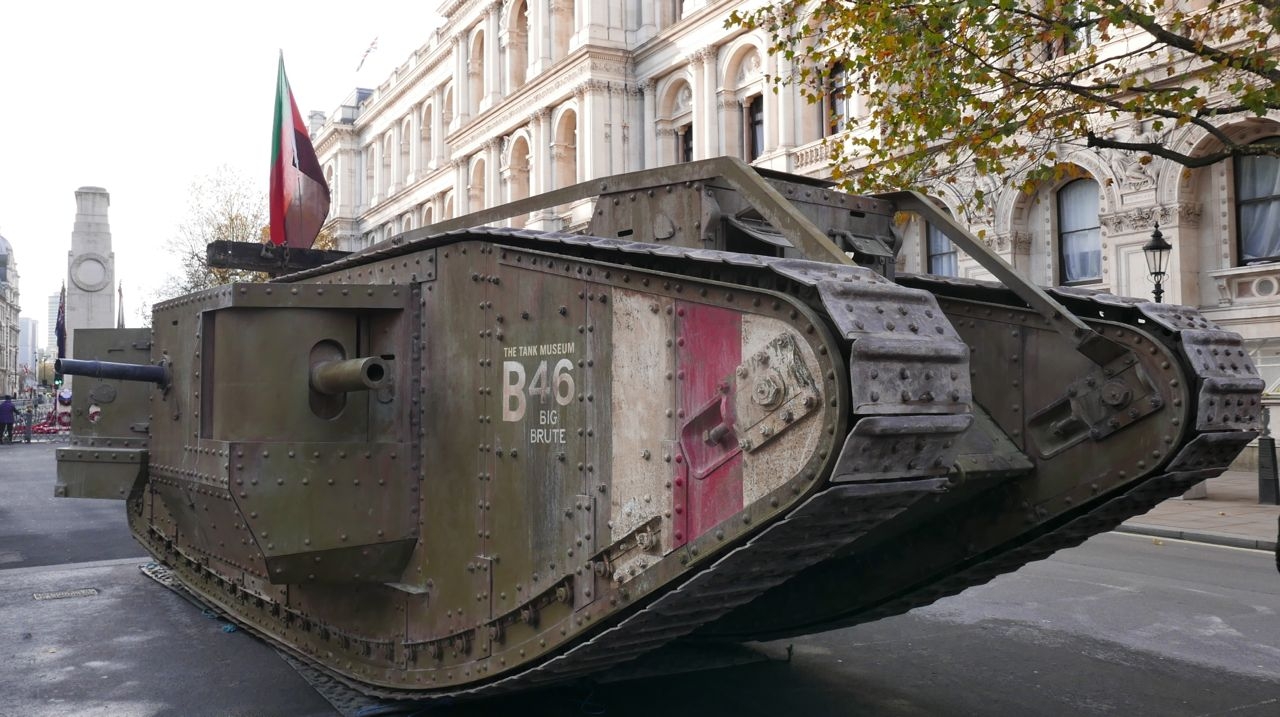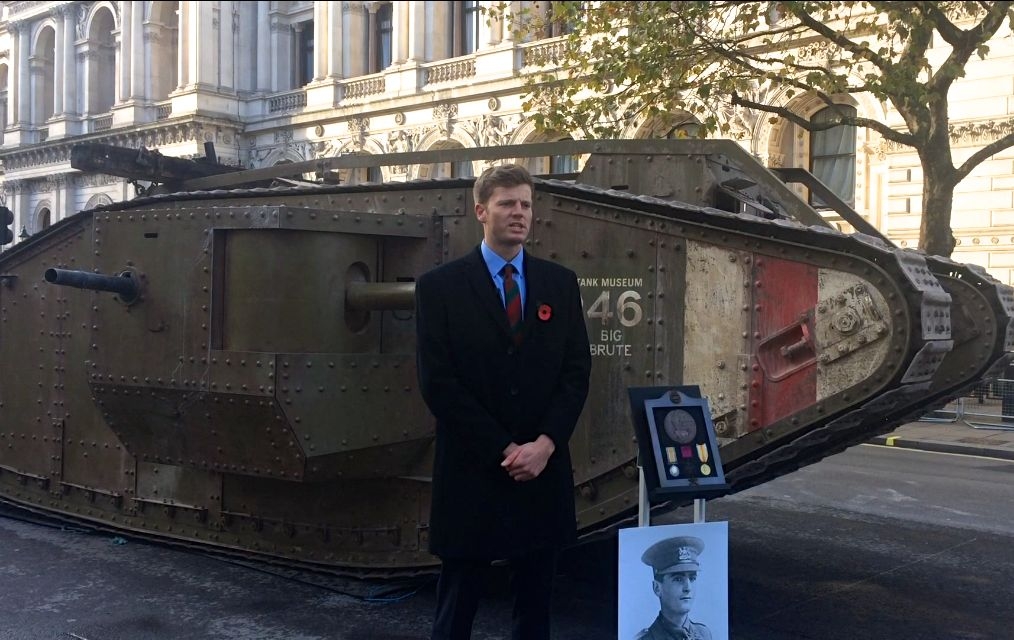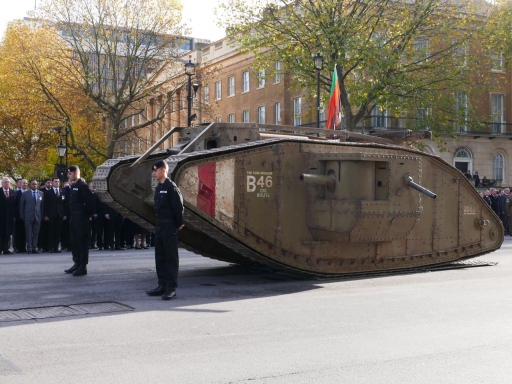Soldiers and veterans of Britain’s Royal Tank Regiment paraded before a Mark IV tank at the Cenotaph in tribute to their pioneering predecessors who fought at the Battle of Cambrai a century ago.
The replica stood just a short distance from the Lutyens-designed monument built as the focus for UK national remembrance after the First World War.
Brought to London from The Tank Museum in Dorset, this Mark IV is modelled on the tanks that punched a hole in the fortifications of the German Hindenburg Line on 20 November 1917.
Captain Richard Wain VC
A Victoria Cross, posthumously awarded to a 20-year-old Tank Corps officer for his actions that day, and now loaned to the museum by his family, was publicly displayed for the first time.
Captain Richard Wain was one of only four tank crewmen to receive the highest British decoration for gallantry during the Great War.
Although seriously wounded after his tank was knocked out, Capt. Wain captured a German position with a Lewis gun, fighting on until he was shot in the head. His body was never found.

The Tank Museum’s replica Mark IV, originally used in the film War Horse, at the Cenotaph (Photo: Centenary News)
More than 400 tanks went into action at Cambrai, more than ever before, on ground chosen for its favourable conditions after recent failures in the mud of Passchendaele.
Brigadier-General Hugh Elles encouraged his men with ‘Special Order No.6’ – announcing that he would personally lead them into battle.
‘Tomorrow, the Tank Corps will have the chance for which it has been waiting for many months, – to operate on good going in the van of the battle. All that hard work and ingenuity can achieve has been done in the way of preparation. It remains for unit commanders to complete the work by judgement and pluck in the battle itself. In the light of past experience, I leave the good name of the Corps with great confidence in their hands. I propose leading the attack of the centre division.’
 Special Order No. 6 recited by Second Lieutenant Rob Hornblower, of the Royal Tank Regiment. Beside him is Captain Richard Wain’s Victoria Cross, posthumously awarded for valour on the first day of Cambrai (Photo: Centenary News)
Special Order No. 6 recited by Second Lieutenant Rob Hornblower, of the Royal Tank Regiment. Beside him is Captain Richard Wain’s Victoria Cross, posthumously awarded for valour on the first day of Cambrai (Photo: Centenary News)
The tanks made significant advances through the barbed wire thickets and trenches of the Hindenburg Line, gaining as much ground in hours as the British Army had in three months at Passchendaele.
Although failures to exploit the breakthroughs, coupled with strong German counter-attacks, reversed the gains, the lessons learned from co-ordinated use of tanks, air power and artillery at Cambrai are seen as harbingers of the Allied victory in 1918.
Soldiers from the Royal Tank Regiment are taking part in a week of Centenary commemorations in Cambrai. Events include a sound & light show at the Hôtel de Ville (Town Hall), running until Saturday November 25; the inauguration of the Cambrai Tank Museum 1917, with the surviving Mark IV tank Deborah as its centrepiece, and a closing military parade on November 26. For details see Cambresis 14-18.
Captain Richard Wain’s Victoria Cross is on display at The Tank Museum, Bovington Dorset. The story of the Battle of Cambrai is told in a documentary released by the Museum for the November 2017 Centenary.
Also in Centenary News:
Cambrai remembered at Ashford tank memorial.
The Royal Tank Regiment commemorates the Battle of Cambrai annually.
Reporting from the Cenotaph by CN Editor
Images: Centenary News
